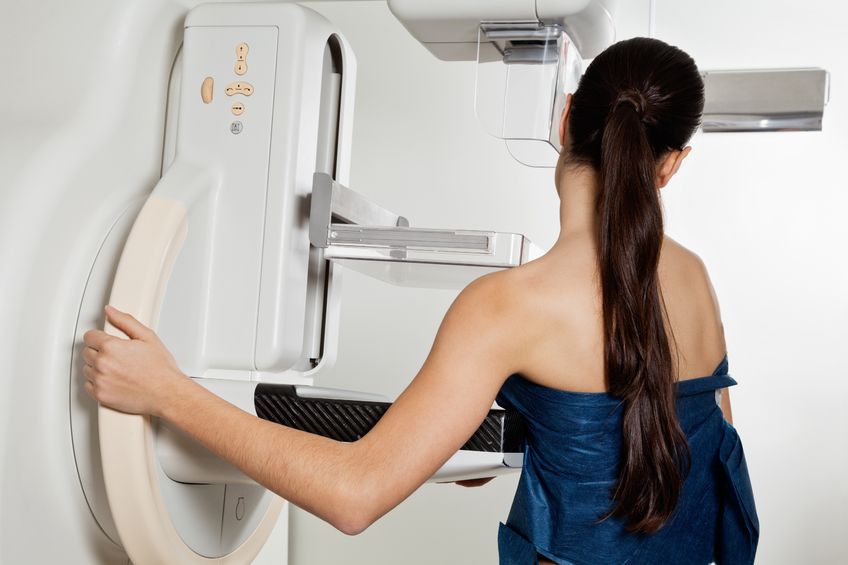Breast cancer is on the rise in Kenya.
And that has an impact on women, their families, their co-workers, businesses, and the country as a whole. Worryingly, women here are succumbing to it at a much younger age compared to much of the world, and cases are often not picked up until they have reached an advanced stage – so mortality rates are high.
Early diagnosis is key to effective treatment and survival, and this is where you, as employers, can make a difference. Increasing your employees’ awareness of breast cancer and helping them to access screening services will improve the health of your staff and demonstrate your commitment to their wellbeing, while helping to keep your health costs down.
October is Breast Cancer Awareness Month, so what better time to tackle this challenging issue in your workplace.
Breast cancer in Kenya
Based on the records of the Nairobi Cancer Registry, breast cancer is the most commonly diagnosed form of cancer among Kenyan women, accounting for 23% of cases and affecting 34 women per 100,000. Although this is much lower than in many western countries, the recorded incidence has increased from around 1,880 cases in 1990 to 4,500 in 2013 – an upward trend happening across sub-Saharan Africa as a whole. Some of this is no doubt due to longer lifespans – cancer incidence increases with age – as well as improved data collection. Still, predictions are worrying. In 2013, research in the International Journal of Cancer estimated that breast cancer in Africa will double by 2050. This may also be due to economic changes. Risk factors include age, obesity, alcohol consumption, and inactivity – all of which typically increase with wealth.
Based on the records of the Nairobi Cancer Registry, breast cancer is the most commonly diagnosed form of cancer among Kenyan women, accounting for 23% of cases and affecting 34 women per 100,000.
Why early diagnosis is key
There is also considerable evidence to suggest that breast cancer strikes women at a younger age in sub-Saharan Africa than in western countries. It also tends to develop more quickly and aggressively in African women, making it more likely to be fatal. An estimated 80–90% of Kenyan breast cancer patients go to the hospital when the cancer is advanced, according to 2013 figures from the World Health Organization (WHO). As a result, breast cancer is the top cause of death for Kenyan women between the ages of 35 and 55.
One 2008 study, looking at women with breast cancer in Kijabe, Kenya, suggested that there may be distinct biological differences in the types of breast cancer that affect many Kenyan women. And in 2013 researchers in the US suggested that this could explain the high levels of deaths from breast cancer among African-American women, many of whom experience similar forms of the disease.
These worrying facts make it even more important for women in Kenya to be aware of their breast health and to be ready to act quickly if changes do occur.
On the plus side, it’s important to note that although the mortality rate is still far too high, deaths from the disease decreased by 5.3% between 1990 and 2013, possibly because of small improvements in detection and earlier treatment.
Screening techniques
Mammography has proven to be the most effective method of picking up breast abnormalities for investigation, including changes that would otherwise be impossible to detect.
Manual examination by a health practitioner – known as clinical breast examination – is a more common form of screening in Kenya. The government guidelines recommend clinical breast examination every two years for women between the ages of 18 and 40.
For women with dense breast tissue or small breasts, mammography may not successfully pick up developing abnormalities. In those cases ultrasound, which is available at some Kenyan breast clinics, may be used as an additional diagnostic tool if a problem has been detected.
The uptake of breast cancer screening services in Kenya is low, though this is partly due to the limited facilities available, especially outside Nairobi. A 2014 study in the East African Medical Journal found that only 7% of 733 women questioned had had been screened.
In a 2015 study in the International Journal of Innovative Research and Development, a questionnaire revealed that there are many reasons why women didn’t have mammograms, ranging from a lack of awareness of the procedure to low perception of personal risk, time-consuming travel to the appointment, and concern about the cost. Kenyan providers charge in the region of KES 10,000 (USD 100) for a mammogram – more than an average month’s salary.
Who should go for breast screening?
International research suggests that mammography has the biggest influence on reducing deaths from breast cancer in women over 49. However, many US health organisations recommend offering women mammograms from the age of 40. Here in Kenya, where breast cancer seems to affect women at younger ages, there may be an argument for starting earlier.
Women with a family history of breast and ovarian cancer, as well as other forms of the disease, may be more at risk of developing breast cancer due to genetic factors. As a result, some younger women who have a family history of cancer may be advised to consider mammograms. And of course women who are worried about any changes in their breasts may also benefit from screening, depending on medical advice.
Women with a family history of breast and ovarian cancer, as well as other forms of the disease, may be more at risk of developing breast cancer due to genetic factors.
Helping your staff access screening services
If you provide medical insurance for your staff, mammograms may well be included. Otherwise, some providers are offering discounted screening services to mark Breast Cancer Awareness month and you as an employer could offer to pay for or subsidise this further for your employees. Some even offer free screening days, though there are likely to be long queues, which could put some people off.
You could also try contacting clinics and hospitals that offer mammography and asking them whether they would consider offering a special discount for your staff. You can find details of cancer screening providers on the Kenyan Network of Cancer Organizations’ website. Giving employees paid leave to attend screening would be a thoughtful gesture that many will appreciate.
Thinking more long-term, you might consider providing the option of mammograms alongside other screening services, either free or subsidised, as part of a workplace wellness scheme. Workplace wellness is only just beginning to take off in Africa, but among the organisations that offer it, screening is one of the most popular elements, alongside education. Your insurance provider or consultant may be able to help you set up a scheme for your employees.
Raising awareness in your workplace and beyond
Breast Cancer Awareness Month is a great opportunity to arrange company events to encourage women to look after the health of their breasts. This might include customers as well as staff.
For example, you could organise some fun activities to raise money for a breast cancer charity and encourage people to dress in pink on the last working day of the month.
However, it’s also important to use the opportunity to increase understanding of the disease and spread positive messages about how we can all help to tackle it, perhaps in the form of a talk or newsletter.
Here are some messages you might like to include:
Live well: There is a strong link between breast cancer and poor lifestyle habits. Experts estimate that around 14% of breast cancer deaths in Kenya in 2013 could be attributed to high body mass index, alcohol, drug use, and inactivity.

Do regular DIY checks: Women should learn how to check their own breasts, looking and feeling for any changes on a monthly basis. Ideally this should be done at the same time every month, such as shortly after menstruation or at the beginning of the calendar month.
It’s important to book an appointment with a doctor quickly to get any potential problems checked out.
Don’t delay: Women in Kenya are more likely to seek medical attention once they already have advanced breast cancer. Unfortunately at this point radical treatment is the only option and they are less likely to survive.
But don’t panic: A change in a woman’s breasts can happen for a number of reasons and doesn’t necessarily indicate cancer, but it’s better to be safe than sorry. A study carried out in Kenya in 2010 found that most women saw the main benefit of early detection as having more time to prepare to die. However, this showed a significant lack of understanding around the subject, as if caught early, a diagnosis of breast cancer is unlikely to be a death sentence.
Mastectomy and chemotherapy aren’t inevitable: An early diagnosis also means that gentler treatment options that conserve breast tissue are available. This involves removing just the affected part of the breast in conjunction with radiotherapy. As well as being a preferable option for many women, this also works out cheaper.
An early diagnosis means that gentler treatment options that conserve breast tissue are available.
There is life after breast cancer: There are an increasing number of breast cancer survivors in Kenya, many with inspirational tales to tell. Consider inviting one of your employees or associates who has survived breast cancer to speak to your female workers to give them courage and hope.
Getting the discussion started
It goes without saying that promoting breast health awareness and facilitating access to screening is at the centre of safeguarding the wellbeing of your female employees. But this doesn’t happen by itself and takes a concerted effort by all concerned.
It’s about raising awareness, providing facilities and programmes, and before all of that, talking openly about the situation.
This is the month to start that conversation.

